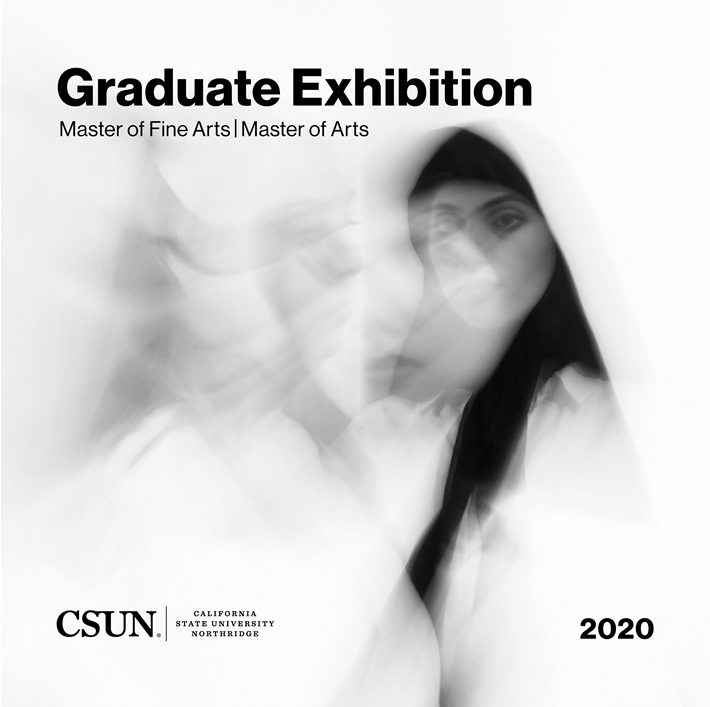|
Title Page
Essay by Steve Hampton, Assistant Professor, Department of Art
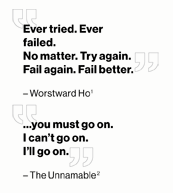
Artistic practice has long flirted with and acquiesced to failure, and perhaps we could say that this is also something of a truism for any current graduate student in the arts. Far from being viewed as a lack of success, however, failure has fueled a renegotiation of interpretive boundaries and successive movements in the arts. Whole aesthetic categories, such as camp, are built on the pretense of failure, loosely defined as taking enjoyment in the failed attempt.(3) Beyond the arts, failure is a crucial concept for philosophy in thinking a ground or condition of possibility for the real.(4)
One of the most familiar quotes describing artistic failure comes from Samuel Beckett’s novella Worstward Ho.“Ever tried. Ever failed. No Matter. Try again. Fail again. Fail better,” captures Beckett’s pessimistic existentialism in describing the alienation artists will endure in pursuit of authentic expression. Beckett’s idea that artistic communication must court failure is premised on the importance of “real” art as a sustained attempt to produce the unexpected, the impossible, and thus, the fleeting. It is the idea that pursuing great art is only possible through even greater doubt in the very possibility of success.
Yet today, Beckett’s view is undergoing something of a crisis. “Fail better,” far from defining the tension of the voided act that is nothing, is now more firmly associated with the tennis player Stanislas Wawrinka, Virgin Record tycoon Richard Branson, #failbetter, self-help literature, parenting manuals, political rhetoric, and hundreds of inspirational memes. In a sense, Beckett’s famous quote has been reduced to an empty platitude extolling the virtues of entrepreneurial resilience.“Ever tried. Ever failed” now resonates with the same profundity as famous quotes such as “Hang in there,” “Continuous improvement is better than delayed perfection,” or “Don’t limit your challenges. Challenge your limits.” As such, “Ever tried. Ever failed” sits comfortably amidst the emerging genre of failure porn(a genre with the odd effect of fetishizing failure). (5) However, this genre only celebrates those failures which anticipate a success: a meaning largely antithetical to Beckett’s intention.
Unmoored from past definitions and drawing heavily on sentiment, failure now teeters on being kitsch. Yet, in this state something uniquely new emerges. Between the impossible slog of Beckett’s pessimism and today’s emotionally reassuring definition as inevitable success sits a synthesis. In discussing this impasse, SIanne Ngai describes a new positive “turn” towards minor aesthetic categories, each of which is defined by the central quality of failure, but which is also able to represent new forms of togetherness. (6) These categories address not only subjective capacities for feeling and acting but the many ways that interacting in the world can include affective labor (the zany), the transmission of information and circulation (the interesting), and conspicuous consumption (the cute).
Taking one category as an example, cute objects offer us new insights into how we think about commodities, consumption, and power dynamics. As an aesthetic of powerlessness --- or of failed social interactions --- there is no experience of a cute object that does not rely on losing one’s sense of control or on pitying the powerless. Cuteness conjures an adoration or desire for intimacy in an object, perhaps speaking to the distance of a world built around abstract exchange, which we come to love because it submits to us all too easily. In this sense, the cute sits between the tension created by tenderness and aggression.
Examples of the cute aesthetic include the work of Takashi Murakami and Yoshitomo Nara; in pop culture the recent appearance of baby Yoda; and one could even say that the more pernicious examples of being- cute infiltrate social interactions through face tuning apps, emojis, and user experience design. (7) As an aesthetic in the fine arts cute fails on two fronts. The first is art’s capacity to serve as an image of non- alienated labor and the second concerns modernity’s preoccupation with shock value. (8) However, this failure opens up a crucial discussion on the very relation between art and society today. The uses and abuses of cuteness posit the crucial question of whether or not aesthetic experience is far enough removed from its social context to provide a critique of the consumptive mechanisms in which it is forever embedded.
The graduates in this year’s exhibition have brought together rather pointed ideas and diverse artistic practices that function through a process of criticism and renegotiation that engages with an aesthetics of failure. Each artist in this exhibition is aware of the re-emergence of ‘minor genres’ today, and each one is engaged in different models of deconstructing specific dichotomies in art production like labor/play, high/low, affective subjectivity/social processes, and the work of art/commodity. As such these artists carry with them a firsthand appreciation of Beckett’s artistic journey. Living a life of creativity is at first a rather bewildering challenge to develop and to sustain, but if one dares to “fail, and fail better,” it leads to more developed insights and focused interventions into the current state of cultural politics.
Each artist in the graduate exhibition shows a certain willingness to fail consistently but is successful in maintaining both a sense of levity and critical irreverence. It is the tension between these two extremes that shows us how each of these artists’ trials and errors lead to an altered awareness of the formal and social interactions that are at play in the world all around us. And for this, their exhibition offers a sense of repose from the failures of the worst, offered up under the dictates of always failing, and failing for the better.
— Steven Hampton
Assistant Professor
Department of Art
1 Samuel Beckett, Nohow On: Company, Ill Seen Ill Said, and Worstward Ho (New York: Grove Press, 2014).
2 Samuel Beckett, Three Novels: Molloy, Malone Dies, The Unnamable (New York: Grove Press, 2009).
3 Susan Sontag, “Notes on Camp,” in Against Interpretation (New York: Picador, 2001), 285. Put differently, our delight in camp comes by way of the pain of failure converted to enjoyment often by way of exaggerating or making failure theatrical.
4 Slavoj Zizek, Less Than Nothing: Hegel and the Shadow of Dialectical Materialism (New York: Verso, 2013). Zizek’s synthetic ontology in Less Than Nothing is an attempt to understand “the real” as the failed attempt.
5 Liza Mundy, The Atlantic, “Losing is the New Winning: How We Came to fetishize failure,” Oct. 2013.
6 Sianne Ngai, Our Aesthetic Categories: Zany, Cute, Interesting (Cambridge: Harvard University Press, 2012).
7 Jesper Juul, The Art of Failure: An Essay on the Pain of Playing Video Games (Cambridge: MIT Press, 2013). 8 Ngai, 21.
Alicia Dianne, MA Illustration
Alicia Dianne
MA Illustration
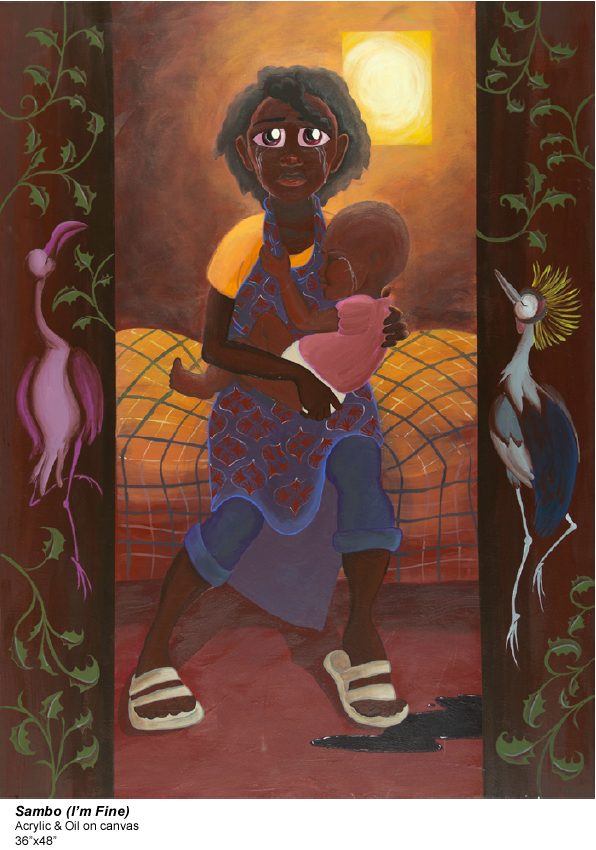
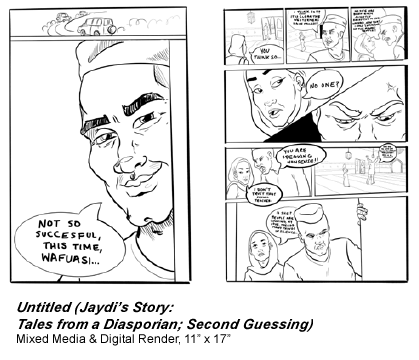
Afrocentric culture, inspiring women, and history’s impact on the present inform my cartooning and filmmaking process. Research-centered, my fictional narratives draw on present-day issues. Through the use of fantasy, I create playful combinations of tragedy and comedy to disempower inner fears and tackle intense subject matter. My work challenges the viewer’s stereotypes, inciting us all to confront our own prejudice.
Jaydi’s Story: Tales from a Diasporian is a graphic novel series that expresses my interest in the history of colonization and its impact on African nations. Colonization has a direct link to poverty, corruption, and conflict. Jaydi’s Story addresses the alarming lack of education regarding the level of exploitation that Africa as experienced, seeking to spread awareness the people whose ancestors derived from it, the Diaspora.
Educating current and future generations will enable anew and better existence. I feel compelled to seek out, align with, and contribute to the means of restorative justice, no matter the scale of impact my actions may have. In Tales from a Diasporian I speak from my own perspective as an African American/African Caribbean woman attempting to get in touch with formerly lost pieces of my identity. This love letter to Africa expresses my frustration with the reality of injustice and the misuse of religious beliefs; it also acknowledges the sense of hopefulness I feel for the future of Africans worldwide.
Anja Honisett, MA Painting
Anja Honisett
MA Painting
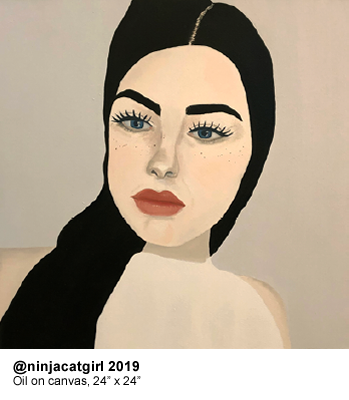
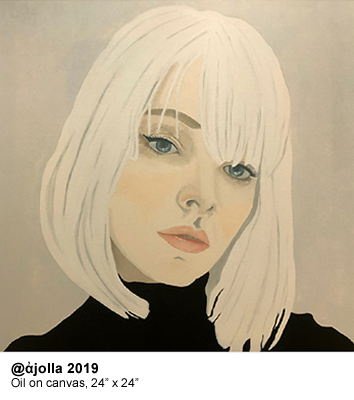
Vulnerability and self-image informs this series of oil paintings, particularly that of women. Social media has capitalized on and commodified these experiences, and my work establishes a dialogue between the “selfie” and its art historical forebear, the idealized female portrait.
The latest trend in a long series of image editing tools is a suite of apps intended for “face tuning,” the resultant images embodying a discordant ambiguity— they’re not meant to represent “reality” nor are they meant to be a conspicuous departure from it. The accumulation of multiple portraits, each vaguely similar with homogenized features, subdued backgrounds, and distant gazes, accentuates this dissonance.
As social relations increasingly take on the market logic of neoliberalism, the question of “reality” becomes increasingly passé. There is no longer a “real,” nor a “truth,” only markets. These “face-tuned” selfies become advertisements; but who or what is the product? This phenomenon transforms users into “aesthetic entrepreneurs,” both boss and worker, brand manager and product alike, under this new the rise of “nano-surveillance” of self-image and its the rise of “nano-surveillance” of self-image and its beauty standards are imposed through the use of filters, air-brushed skin, plumped lips, enlarged eyes, resulting self-exploitation specific to women; idealized beauty standards are imposed through the use of filters, air-brushed skin, plumped lips, enlarged eyes, and slimmed features. I translate these facets of the “tuned” selfie into larger-than-life compositions; the square format, grid-like installation, and frustratingly similar facial features mimic the feed found on social media platforms, while the repetition of flat paintwork, hard edges, and a muted palette represent the de-individualizing of aesthetic identity.
Coby Cerna, MA Painting
Coby Cerna
MA Painting
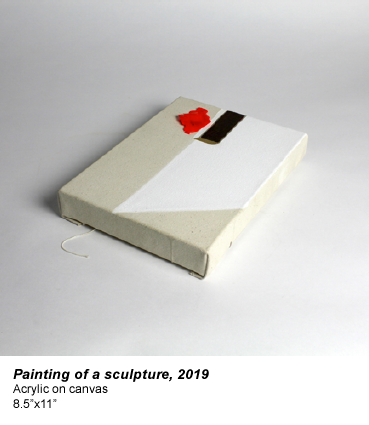
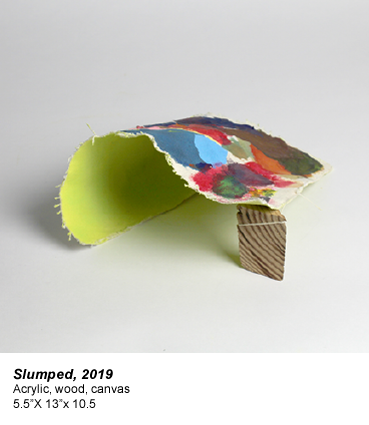
Consumed by cartoons, comic books, and comic strips, reading and viewing them are an integral part of my life; they inform and influence my art-making process. These humorous drawings function as points of reference in my work, but also provide distractions and an escape from real-world concerns. I transform the tedious grind of working in the customer service industry into a meaningful undertaking by acknowledging the nuances of daily life and planting them in my work.
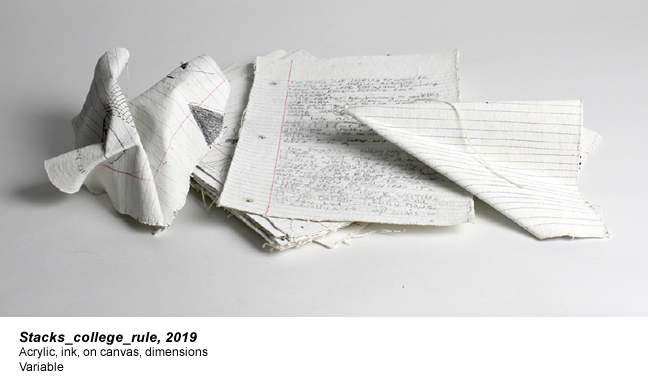
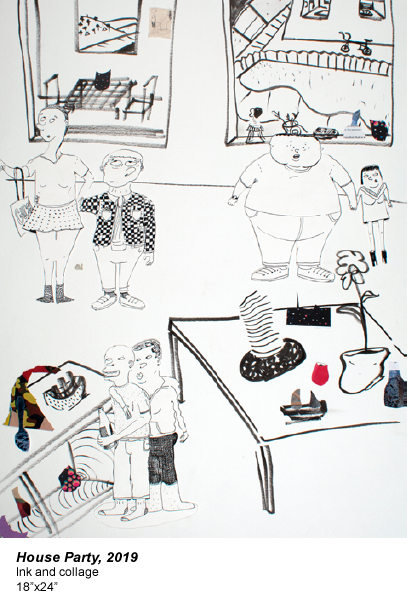
Erin Eleniak, MA Ceramics
Erin Eleniak
MA Ceramics
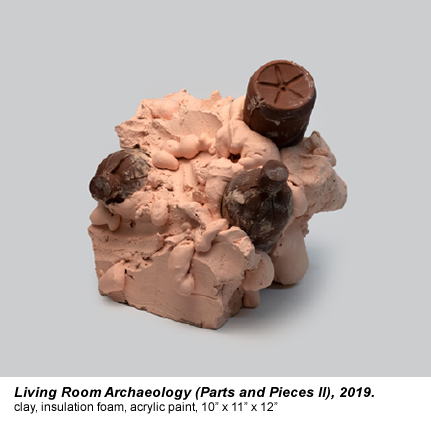

Entanglements between geologic, material, cosmic, and cultural elements inform my practice. Unἀred clay often forms the bedrock of imagined spaces—like the land, it is ubiquitous and unpredictable—a live, mutable foundation, yet it dries and cracks to reveal a parched wasteland. In my work, contemporary landscapes function as dynamic places where the remnants of transient human experience are fossilized, dissolving perceived boundaries between cultural and natural spaces.
Ceramic and material processes evoke geologic transmogrification and, with video and photographic documents, affirm interstitial spaces and discarded objects as articles of inquiry. Using these together, I exhume and index artifacts of the present and recent past to challenge notions of preciousness and parse systems of value.
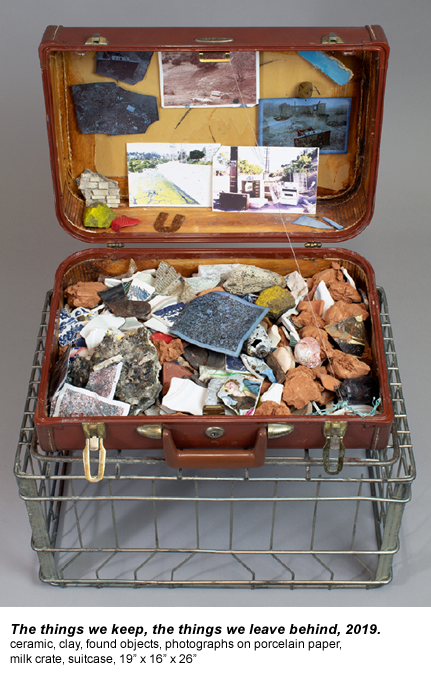
Faeze Ilkhani, MA Photography/Video
Faeze Ilkhani
MA Photography/Video
As an Iranian woman, I wonder why other Iranian women live according to tradition and avoid expressing themselves openly. As a consequence, I think many Iranian women are misunderstood, hiding behind cultural directives and fostering the development of two faces: private and public.
My photographs embody this duality and portray Iranian women inhabiting this layered existence through doubling, mirroring, and multiple exposures. I draw on Western notions of femininity and feminism to challenge Iranian perceptions of women as second-class citizens. My work acknowledges Iranian women’s distinct identities and rights despite the patriarchal societies in which they live; it depicts the differences between who they want to be and who they have to be. Being imprisoned in the do’s and don’ts of social enforcement precludes the women in my country from living in the world and embracing their distinct identities.
My large-scale, black and white photographs contain layers of data and motion that signify this struggle. Non-traditional portraiture and the abstractions that result from it emphasize gestures and symbols while protecting specific identities. Larger-than-life bodies fill the walls, command attention, and cannot be dismissed.
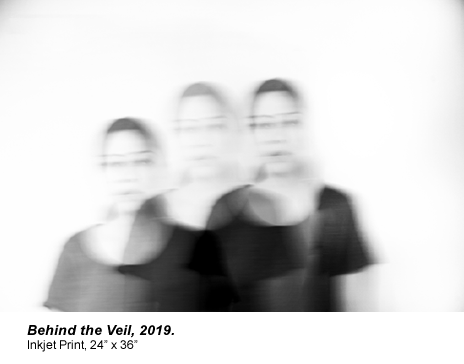
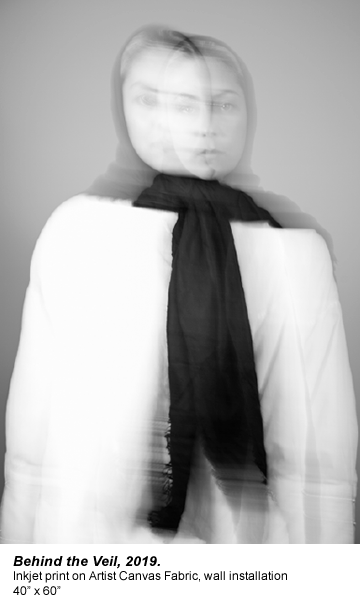
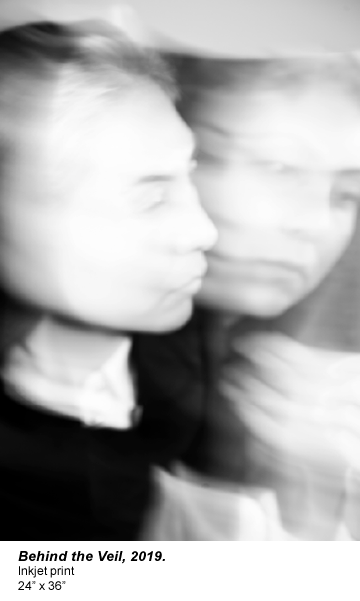
Garen Novruzyan, MA Sculpture/Painting
Garen Novruzyan
MA Sculpture/Painting
There are poetic connections and possibilities among forms, colors, and textural qualities found within existing architectural structures and natural environments. Unexpected combinations of these elements mold them into new forms and meanings, affording momentary pauses and opportunities.
My upbringing in Los Angeles informs my fascination with surface textures. Color and form are brought to cityscapes of Southern California as the glowing cityscapes of Southern California as the glowing cityscapes of Southern California as the glowing daylight fades into the twilight oranges, pinks, and violets of sunset. Moments present themselves in my daily life when a synthesis of these elements offers space for meditation, such as in the way that flower petals from a blue jacaranda tree cover My work lies in the appreciation of the different an entire sidewalk turning it into a visual pool of violet. My work lies in the appreciation of the different atmospheres revealed by using sculpture and painting to alter any given space.
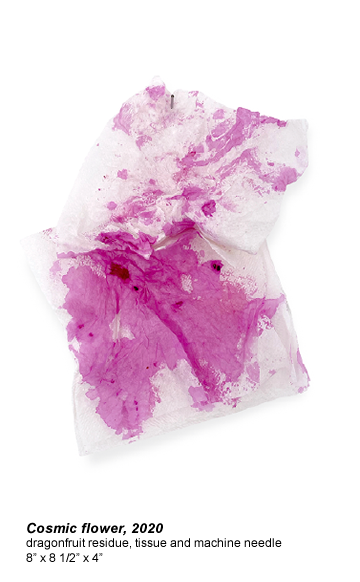
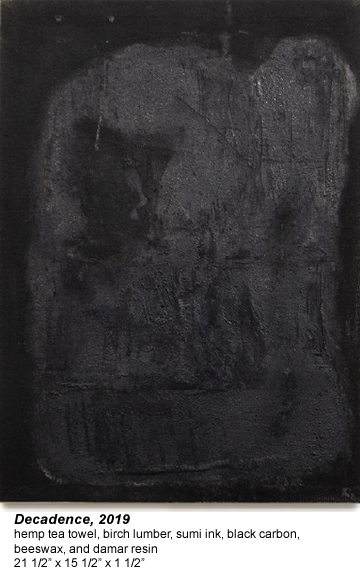
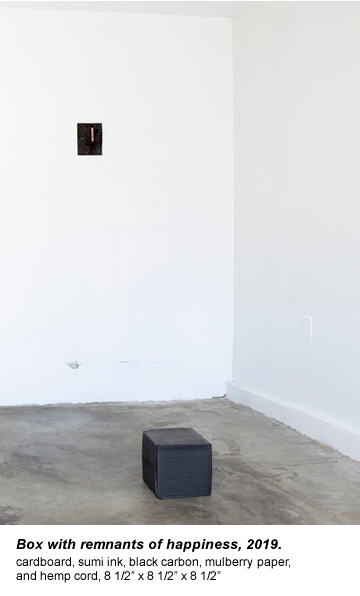
Matt Brugger, MA Ceramics
Matt Brugger
MA Ceramics
Ceramics has a loaded history bound to tactile to complement practical gestures, and as unfired objects in their malleable, elemental state, clay provokes bodily awareness. My work examines this sensibility through noisy, kinetic, ceramic objects and devices that insist on audience interaction. Together they cultivate multisensory and participatory spaces that incite a visceral awareness of other bodies.
Drawing from prehistory’s handheld artifacts and monolithic stone monuments as records of mythos and utility, I imbue ceramic forms with my own mythologies, whimsically blending familiar functionality of contemporary life with kinetic objects of dubious futility and provenance. These awkward and interactive ceramic objects take on lives of their own to arouse self-awareness by connecting lives past and present.
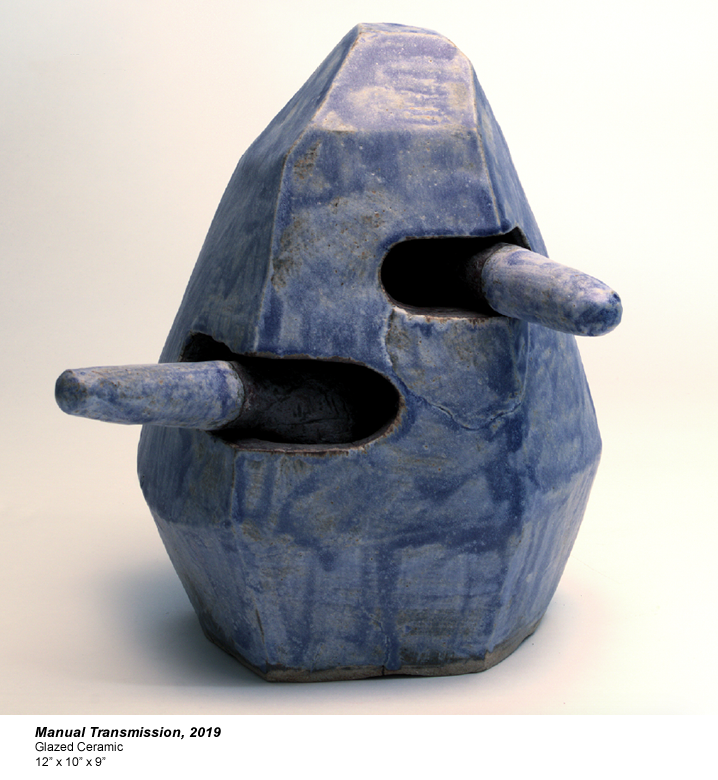
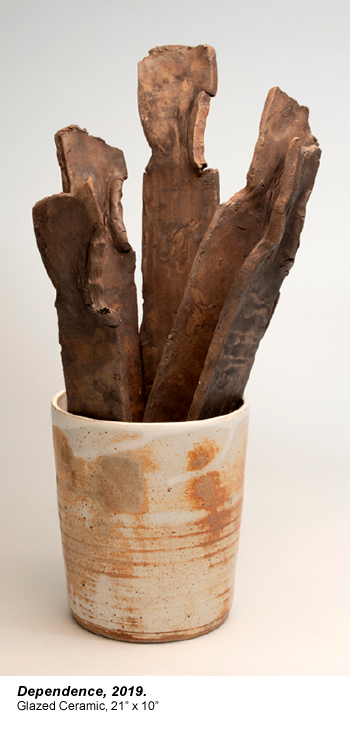
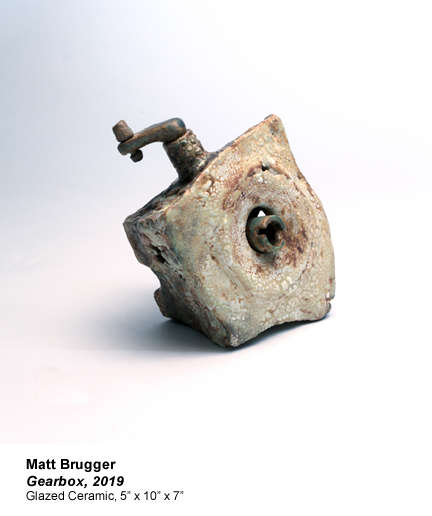
Matthew Chan, MFA Photography/Video
Matthew Chan
MFA Photography/Video
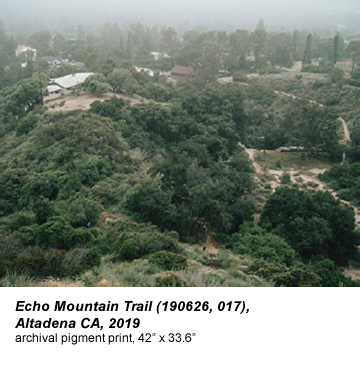

Socio-economics, media consumption, adherence to Western cultural norms, and my underlying guilt about assimilation inform my work. Photography, video, performance, and installation examine these and acknowledge my disjointed relationship to them. This multimedia approach addresses a yearning to reconcile my Chinese background with my upbringing in a uniquely American cultural landscape: in South Central Los Angeles during in the 1980’s.
My photographs seek out seemingly ordinary locations to reveal their distinct identities; although I have memories connected to these places, the specifics are inconsequential to the compositions. An innocuous commercial intersection conjures my younger self driving in days past, but the unpopulated image is quiet and still. My experimental videos use deepfake technology; I use human-image synthesis to combine images of myself with found images and videos from popular Western culture. Replacing the white male lead in iconic, blockbuster films with my Chinese American visage, I examine ideas about the lack of cultural representation in film and its influence on people; by re-contextualizing familiar narratives, my work challenges the traditional notions of masculinity in Hollywood.
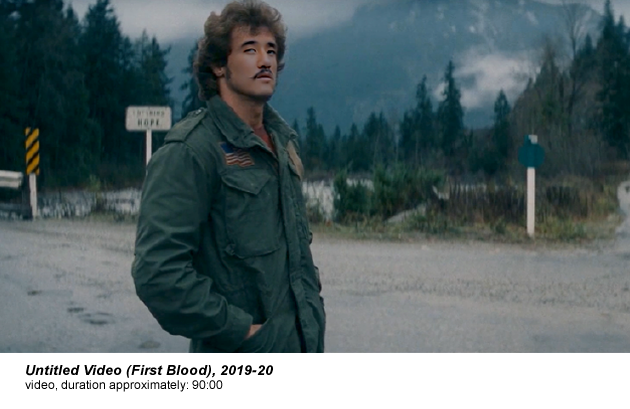
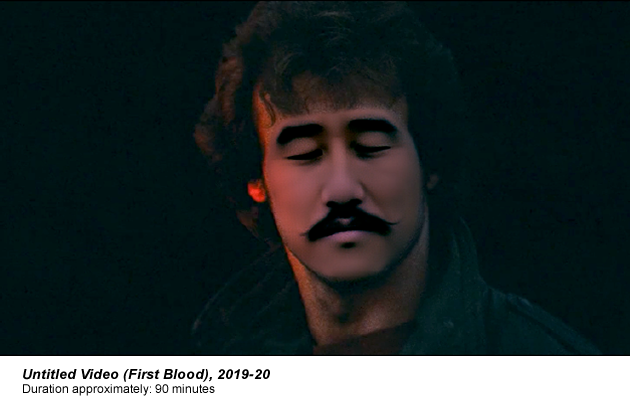
Michael Boyd Roman, MFA Drawing
Michael Boyd Roman
MFA Drawing
My work portrays the ordinary grace of contemporary Black men. Blending elements from hip-hop and urban culture with art historical references and religious iconography, my drawings insist that concepts of beauty and divinity also apply to Black men. I showcase divine Black beauty by making positive and spiritually resonant images to counter long-held historical narratives about Black masculinity. Using symbols of spiritual perfection that have reinforced concepts of white supremacy and hegemony for centuries, I empower my figures to embody and occupy similar positions of power, prestige, and purity.
Even after, or perhaps as a result of, various Black American freedom movements from the 1950’s through the 1980’s, images of Black men almost always embody political or social propaganda. My work de-politicizes the contemporary Black male in response to imagery that insidiously encourages its politicization in the current climate. Eliminating socio-political signifiers elicits implicit biases; viewers’ responses to the work result from their own beliefs and experiences. The bodies and visages I draw do not allude to wealth or station in life, but they connect with viewers through body language, facial expression, and gesture. Using drawing, installation, and digital media, my work emphasizes that respecting the differences in people requires recognizing the divinity inherent in those who appear different.
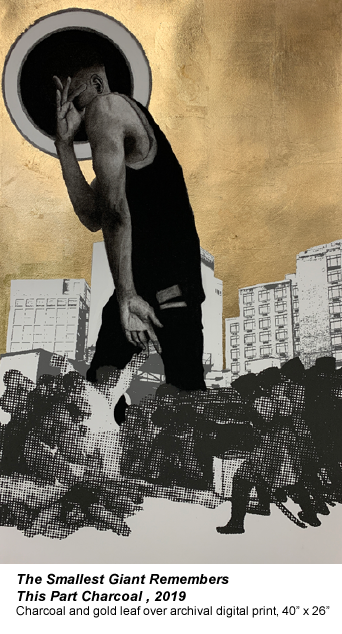

Patricia Lauletta, MA Photography/Video
Patricia Lauletta
MA Photography/Video
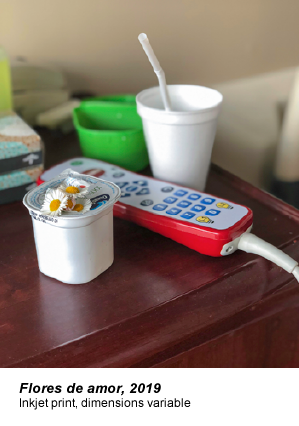
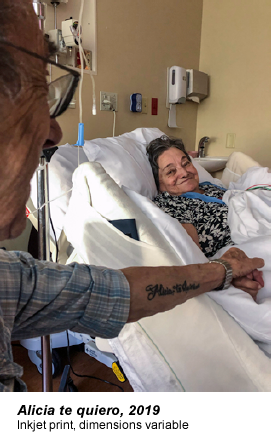
The autumn of my life brought a heightened perception of the ephemeral nature of time. Most people eagerly await the next milestone while growing up, chasing dreams, creating families, and watching children thrive. As my mother’s memory fades, I feel the urgency to preserve special moments that represent the familial connection; I find myself sandwiched between the bright future of my family’s younger generation and watching my mother as dementia and illness erode the person she used to be. Because society does little to prepare individuals for this part of life, observing the manifestations of my family’s bonds and the contrast of new life and inevitable death inform my photographs.
I photograph celebratory, quotidian, and solemn moments with my immediate and extended family to acknowledge the passing and value of time. The camera functions as an extension of my heart and mind as I engage with, observe, and photograph members of my family living their lives. The camera preserves these moments and enables future generations to learn about the various manifestations of one family’s bonds in twenty-first century Southern California.
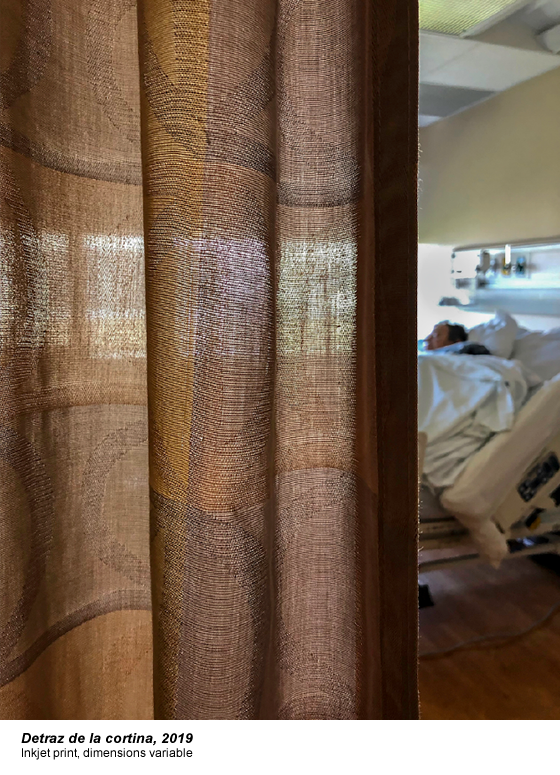
Tirsa Delate, MFA Photography/Video
Tirsa Delate
MFA Photography/Video
Time is a fundamental parameter in my practice, and it denotes the spontaneity and transience of events. Interactive performance and video works explore the connections between loss and sanctuary, acknowledging subjective perceptions of time and memory. My physically centered practice embodies euphoric highs and bleak lows through movement and sound, both live and documented. I combine private and public performance through collaboration with, movement among, and observation of bodies. Pain and endurance bridge bodies within physical and psychological boundaries while the relationship of motion and sound synthesizes empathy, futility, grief, joy, and obsession.
Credits
CSUN Department of Art
Graduate Faculty
Edward Alfano | Steven Hampton Timothy Forcum Lesley Krane Laurel Long Mario Ontiveros | Kari Reardon Vicky Reynolds Michelle Rozic Erik Mark Sandberg Christian Tedeschi Jan Tumlir |
Art Department Staff
| Michael Bizon Rochelle Fischer | Hubert Hummel Andres Janacua Chuck Przelomiec | Mari Uichanco Abraham Zapata |
Art Gallery Staff
Jim Sweeters: Gallery Director
Erika Ostrander: Exhibitions Coordinator / Office Manager
Gallery Assistants: Oliver Mayhall / Garen Novruzyan / Erin Eleniak / Adrienne Sacks
Anthony Flores / Adrienne Kinsella / Alexis Ramos / Francis Robateau
Special thanks to Dan Hosken, Dean of the Mike Curb College of Arts, Media, and Communication;
Edward Alfano, Chair of the Art Department; Lesley Krane, Graduate Coordinator;
Graduate Faculty; California State University, Northridge Art Galleries; Jim Sweeters, Gallery Director;
Erika Ostrander, Exhibitions Coordinator & Office Manager; and Anthony Brown for the catalogue design.

